Some of the most frustrating garden pests are the ones you can’t see—(not) looking at you, spider mites.
These tiny pests do considerable damage to plants despite their size, and you’ll often see the aftermath of their work before you ever notice the spider mites themselves. They’re so small that it takes a magnifying glass to identify them correctly; but once you do see them up close, it’s obvious where they get their name from.
Spider mites spin silk webs similar to spiders. Belonging to the Tetranychidae family, they’re closely related to spiders and ticks and look like miniature spiders with oval bodies (measuring less than half a millimeter) and eight legs. Spider mites come in various colors, including red, green, yellow, and brown, depending on their developmental stage.
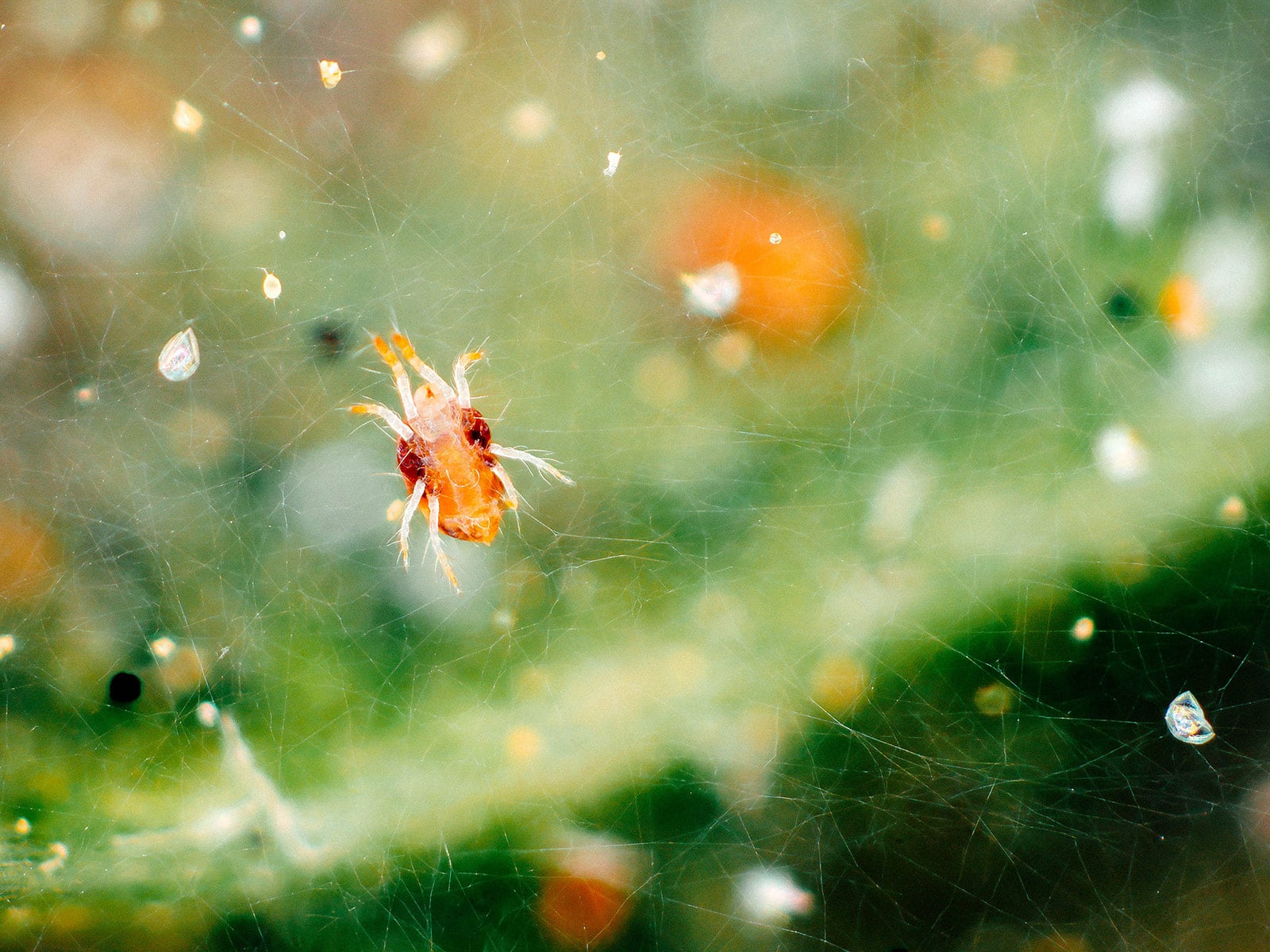
The most common species is the red spider mite, also called the two-spotted spider mite (Tetranychus urticae). It rarely appears red though (only in fall and only outdoors) and is often confused for the actually red predatory mite, which is one of the good guys.
Most of the time, spider mites look like moving dust particles to the naked eye, appearing beige or greenish and often (but not always) marked with two dark spots on their backs.
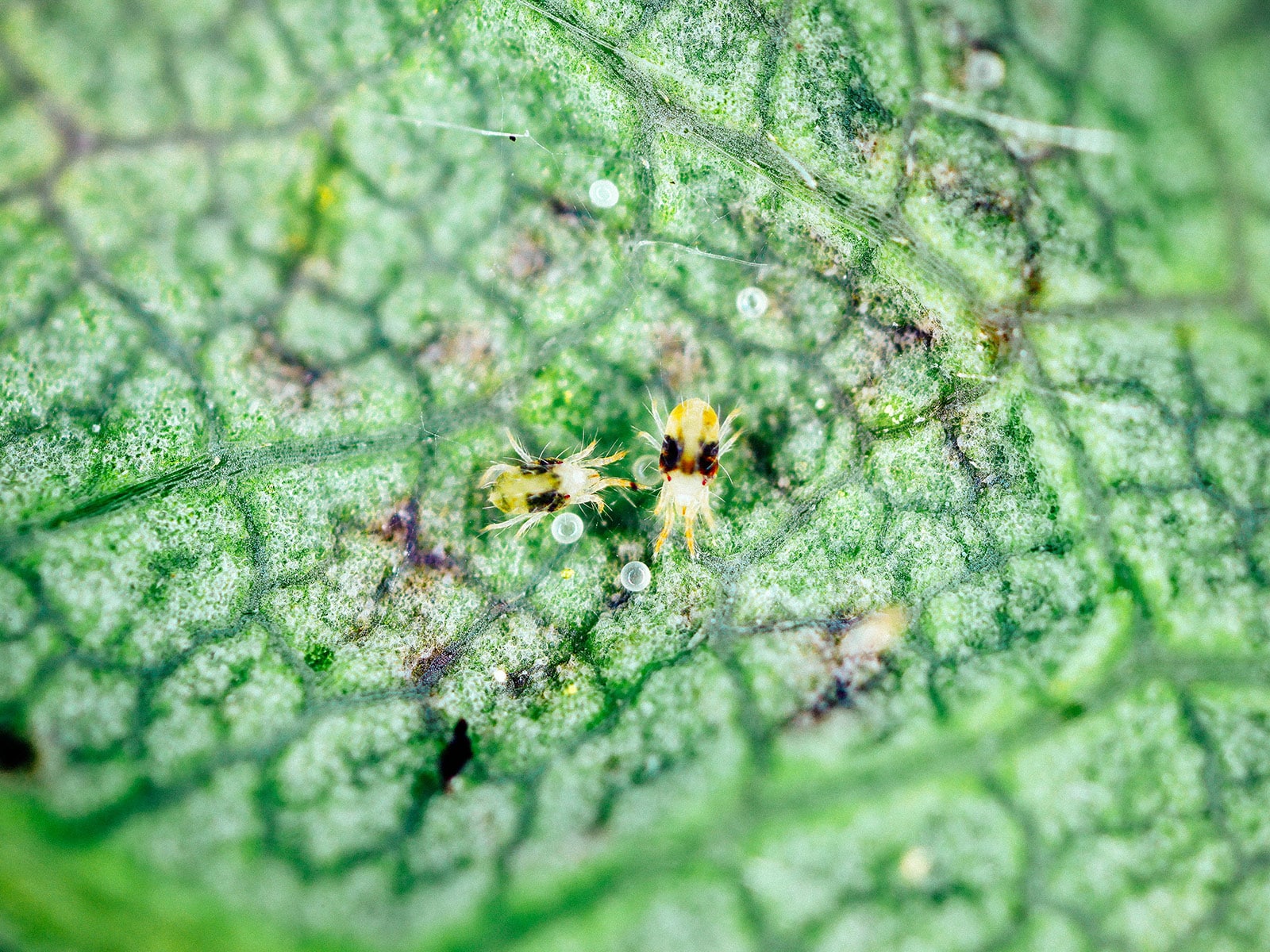
What spider mite damage looks like
Spider mites feed on plants by sucking the contents out of plant cells, leaving behind only the cell wall. The emptied cells appear sort of silvery, giving damaged leaves a speckled or stippled appearance. Over time, this feeding can lead to:
- Discoloration. As more plant cells are damaged, leaves take on a faded yellow, bronze, or grayish cast.
- Defoliation. Once the leaves turn bronze or gray, they often drop prematurely.
- Webbing. A severe infestation of spider mites can coat leaves and stems in a fine silk webbing. These webs help them travel quickly and also protect them from predators. Hundreds of spider mites can be found in a web and at this stage, your plant is in danger of dying.
- Stunted growth. Heavily infested plants may have stunted growth, reduced yields of flowers and fruits, and eventually die altogether.

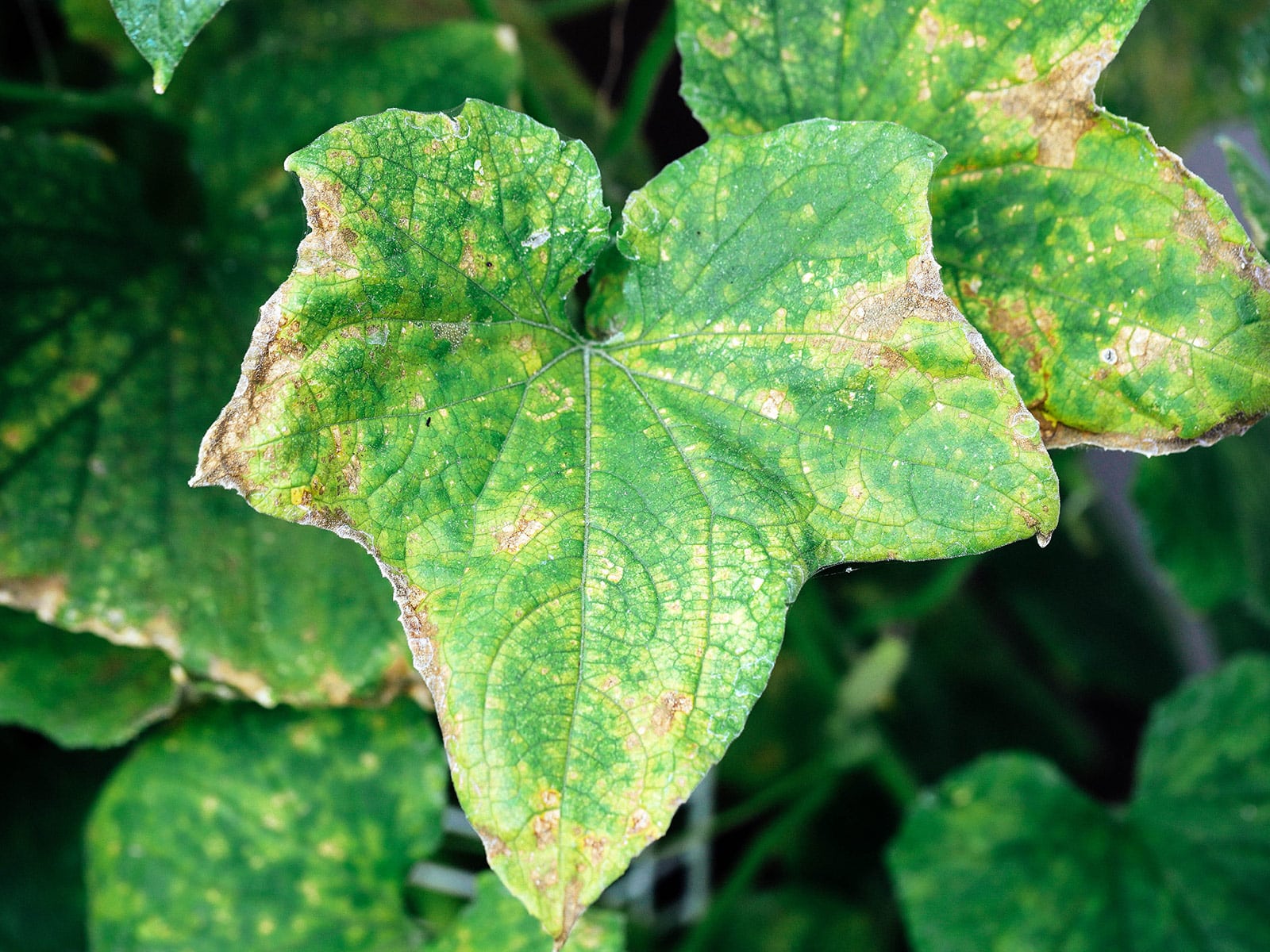
Spider mites feed on hundreds of types of plants, including most vegetables and food crops (such as tomatoes, peppers, beans, and strawberries), ornamental plants (such as roses and impatiens), and houseplants (such as Alocasias and Philodendrons).

A lot of plants can actually support a small population of spider mites without suffering too much damage, but the ones with thinner, more delicate leaves (like Ctenanthe, Pothos, prayer plants, banana plants, and other tropical species) tend to be more susceptible to damage.
Disclosure: If you shop from my article or make a purchase through one of my links, I may receive commissions on some of the products I recommend.
How to prevent and get rid of spider mites in your garden
Spider mites have short life cycles and reproduce rapidly. They can also become resistant to pesticides, so finding them early is key to controlling their population.
1. Quarantine and inspect new plants.
Spider mites are often introduced into a garden by already infested plants. When you bring home new vegetable starts or bedding plants, carefully inspect the undersides of the leaves for any signs of spider mite activity.
New houseplants should be isolated from other houseplants until you’re sure that no spider mites are present. I often wash new nursery plants in the sink before I repot them as insurance against outside pests.
2. Make sure your plants are well watered.
Red spider mites thrive in hot, dry weather, and heat-stressed plants are more likely to be damaged. (Learn how to help your plants survive a heat wave in my guide here.) Make sure your garden is mulched to retain moisture, and use an automated irrigation system to provide consistent water.
Related: The best types of organic mulch to use in your garden
Houseplants are especially vulnerable in late fall and winter when you start heating up your home. Spider mites just love all that warm and dry indoor air!
To keep them under control, lower the thermostat (especially at night) and try to bring up the humidity however you can: with a room humidifier, by grouping multiple houseplants together, or by moving them into the bathroom.
3. Cut off damaged or infested leaves.
If only a few leaves are damaged, remove and discard them (along with the colonies of spider mites). This keeps them from spreading to the rest of the plant (as well as nearby plants), but is only effective if you catch them early.
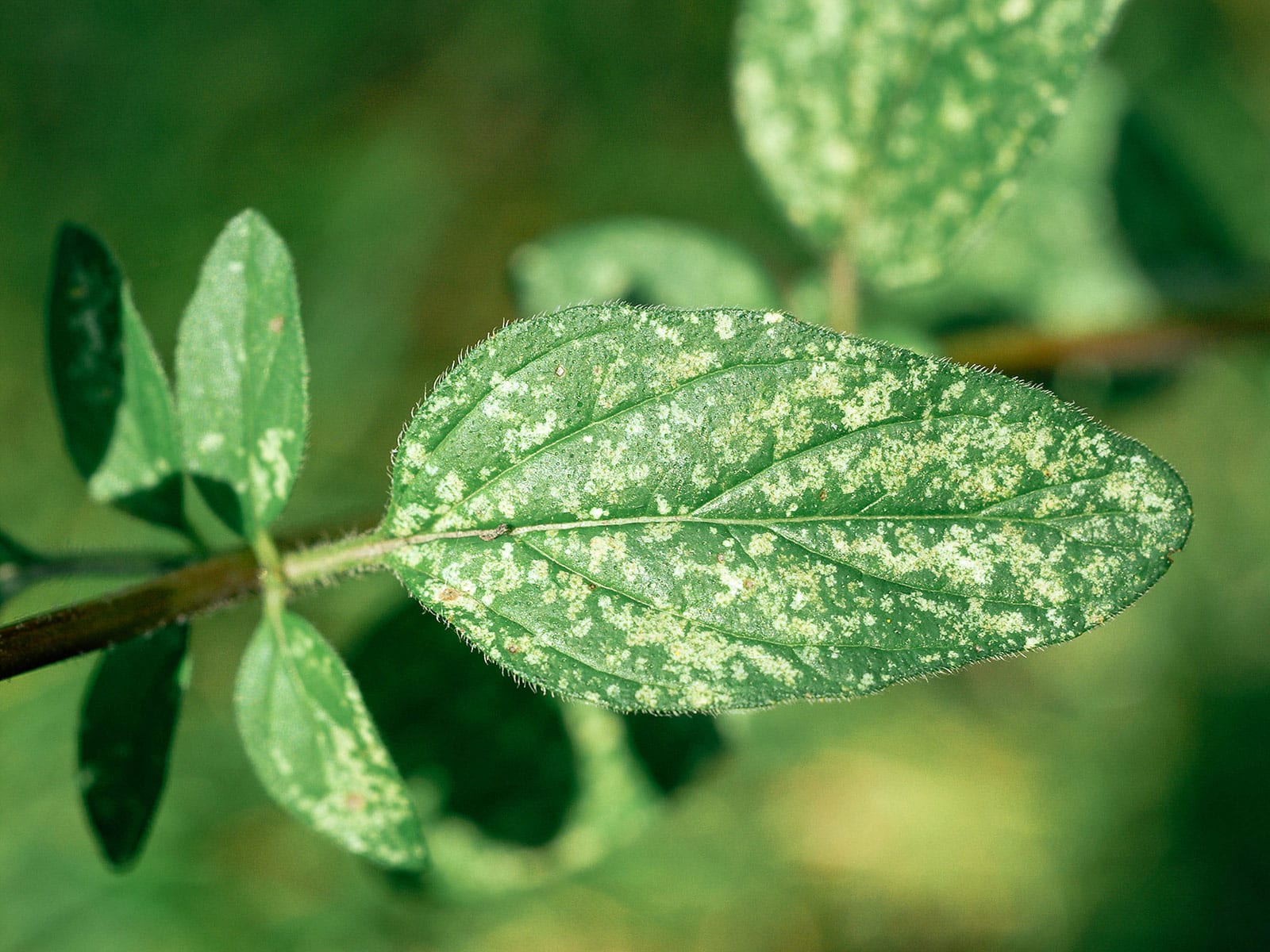
4. Remove spider mites with a strong blast of water.
Spider mites can easily be sprayed off with a garden hose as soon as they’re spotted. Repeat every day or every other day to keep their numbers down; this also keeps the environment cooler and wetter (two things they don’t like).
The pests usually live on the undersides of leaves, so be sure to spray them all over to thoroughly remove the webs and colonies.
Houseplants can be washed off under a sink or shower, or with a damp soapy cloth. This is good practice even in the absence of spider mites; removing household dust helps your plants photosynthesize more efficiently, keeping them healthier overall (and more resilient against pests).
A repeated washing once or twice a year is usually enough to keep spider mites under control, but if the air remains hot and dry, they will be back!
5. Dust affected plants with diatomaceous earth.
Diatomaceous earth (DE) is a natural, chalky white powder composed of the fossilized remains of diatoms (microscopic algae). Under a microscope, these diatoms have abrasive outer shells made of silica, which act as a desiccant. When you apply DE directly to spider mites, the tiny particles “cut” the pests and dehydrate their exoskeletons, effectively killing them.
Make sure you use food-grade diatomaceous earth (not the industrial-grade DE found in pool filters) and wear a mask if you’re sensitive to dust. DE only works on contact, so it needs to be applied where you see spider mite damage.
It also has to be reapplied after rain or irrigation, since it’s ineffective when wet. The easiest (and least messy) method is with a puffer applicator or dusting tool.
Where to buy
Diatomaceous earth
Don’t attempt this if your plant is covered in webbing, as spider mites will be out of range behind their webs. Spray or wipe down your plants first to remove all the webbing and then let the leaves dry off before treating with DE.
6. Treat affected plants with insecticidal soap or horticultural oil.
Most spider mites can be controlled with insecticidal soap or horticultural oil, which coats their bodies and suffocates them.
As mentioned above, your affected plants have to be free of webbing first before the insecticidal soap or horticultural oil can work, since both work on contact only. For good control, be sure you cover all leaf surfaces evenly where you see spider mite damage.
Read more: Make your own insecticidal soap at home with just two ingredients
Where to buy
Insecticidal soaps and oils
Avoid using broad-spectrum insecticides, since they can make your spider mite problem even worse. That’s because these types of insecticides kill off their natural predators, which results in an outbreak of spider mites.
Certain insecticides, like carbaryl (Sevin), some organophosphates, and some pyrethroids can also cause an explosion in spider mite fertility, which is the opposite of what you want!
7. Introduce predatory insects that have an appetite for spider mites.
One of the best ways to manage spider mites naturally is to encourage the presence of their natural enemies in your garden.
One of these is predatory mites. Phytoseiulus persimilis, Neoseiulus (Amblyseius) californicus, and Neoseiulus fallacis are all species of beneficial predator mites that feed on red spider mites. They can be purchased online and released into the garden where spider mite activity is highest.
Where to buy
Predator mites
Green lacewings and ladybugs are also beneficial insects you want to keep around. They’re voracious consumers of many common pests—including spider mites—and you can attract them by growing a wide variety of nectar-rich flowers that bloom at different times of year.
They won’t stick around and reproduce if there’s no food available, so it’s important to maintain a good balance of bugs (even the “bad” ones) in your garden—and not try to eliminate every single one.


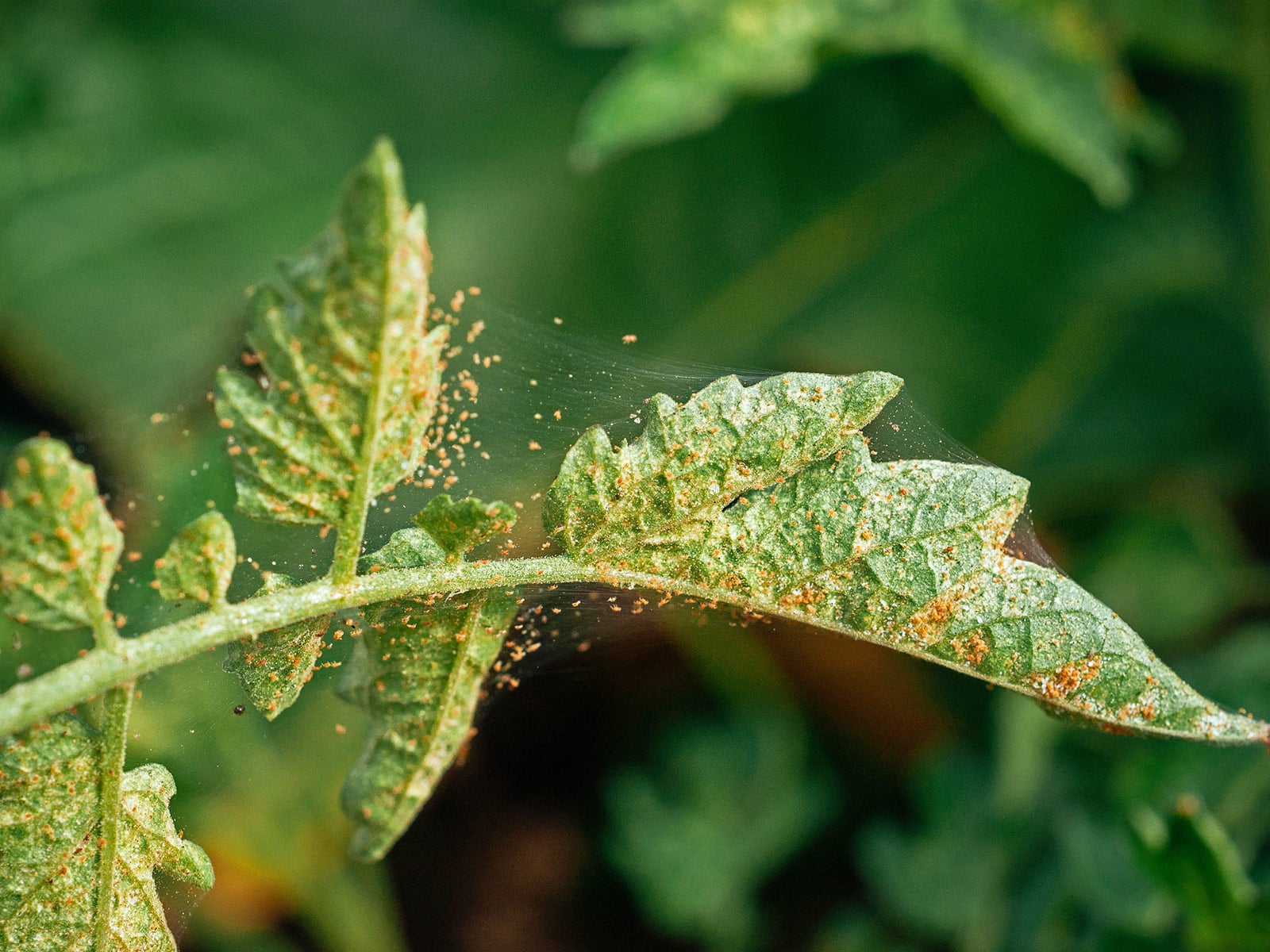













Mahalo for another great post. In sunny, dry leeward Hawaii(Kailua Kona), spider mite is one of the major reasons tomatoes fail to live for the years expected in a subtropical climate. Our ‘soil’ is nematode infested rocks. Current price for a single salad tomato here is $1-1.5! Neem oil is great for many pests on many plants but it is usually the final nail in a tomatoes coffin. Instead, use sulfur + pyrethrin at first sign of stippling (Bonide Tomato and Vegetable spray). West Hawai’i Master Gardener Emeritus.